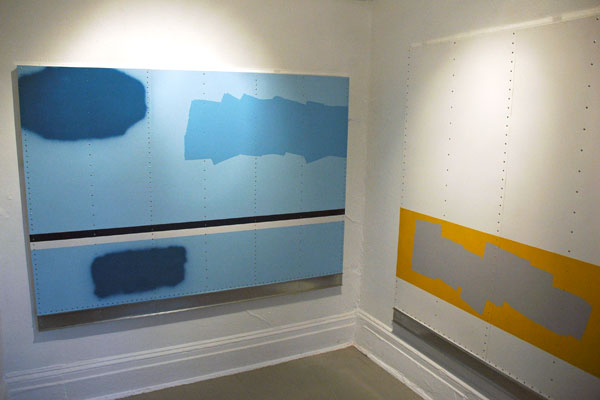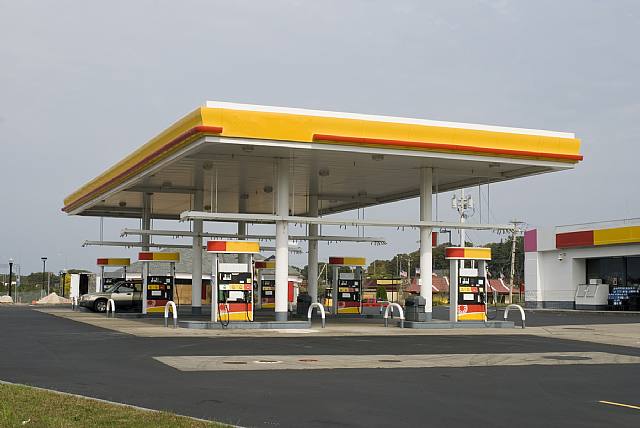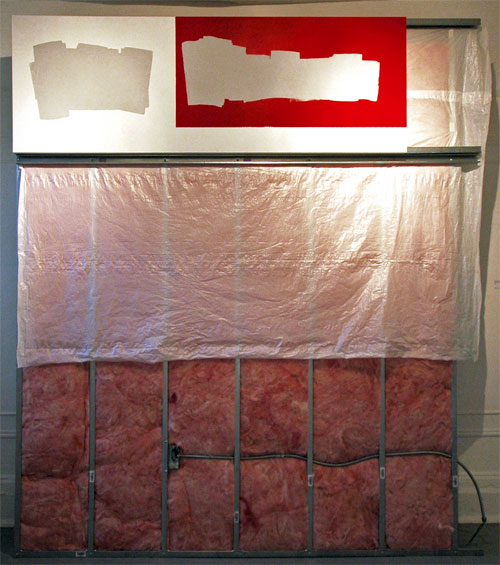
installation view of Derek Stroup's "Blue Panel", on the left , and a large detail of the slightly larger "White Panel" on the right (each completed in 2009, of enamel paint on sheet metal, with an aluminum stud below, and measuring approximately 5' x 6')

Derek Stroup Shell 1 2008 digital C-print
Derek Stroup's show, "Station Pieces", in the front rooms of Williamsburg's A. M. Richard gallery closes tomorrow, Sunday. Barry and saw it this afternoon and we immediately designated it a top pick on ArtCat.
In this elegant, and very eloquent small show the artist presents conceptual work attached to imagery stubbornly-familiar to all of us. Stroup also deals with a number of the contemporary art world's current recognized preoccupations: He incorporates or tackles the subjects of street art, economic devastation, the endangered planet, sculpture assembled from existing materials, hand-made versions of machine-made products, digitally-altered images, realism, abstraction, the new minimalism, text (or its effacement), the recording of built landscapes, and architectural fragments. He pulls it all together with amazing skill, to totally original, and gorgeous, effect, but when we leave its presence Stroup's art rewards us with questions whose answers will continue to elude us.
The installation may ostensibly be devoted to commonplace proprietary gas stations, but, to begin with, all logos have been completely erased. This was accomplished digitally on the one photograph included, and with thick strokes of paint (much as tags or graffiti are routinely removed by the owners of the property on which they are inscribed) on the three "paintings", whose surfaces or mountings have been co-opted for use as minimalist, abstract panels - sculptures in fact, since they are rendered on large sheets of riveted steel attached to other elements.
The commercial signs and the apparatuses, having now been rendered entirely anonymous, appear to have lost their purpose, and the world which created them - and was fed by them - may have entirely lost its validity. Or not.
The largest, most ambitious and most complex piece in the show is "Red, White, Grey 2 (Station Exterior)" which, except for its essential conceptual element, might suggest the practice of any number of younger sculptors today, except that the materials Stroup uses are not exactly "found"; instead, designed to assume a specific form, the components were pulled from the racks of suppliers of new construction materials.
I tried to get an image of "Red, White, Grey", whose nine feet by nine feet dimensions ensure that it fully occupies the larger of the two rooms, but I couldn't come up with anything which even suggested the awesome impact of the piece I stared at this afternoon.
You have to be there. Really. So this thumbnail can only be a rough approximation:
[second image from artnet]
